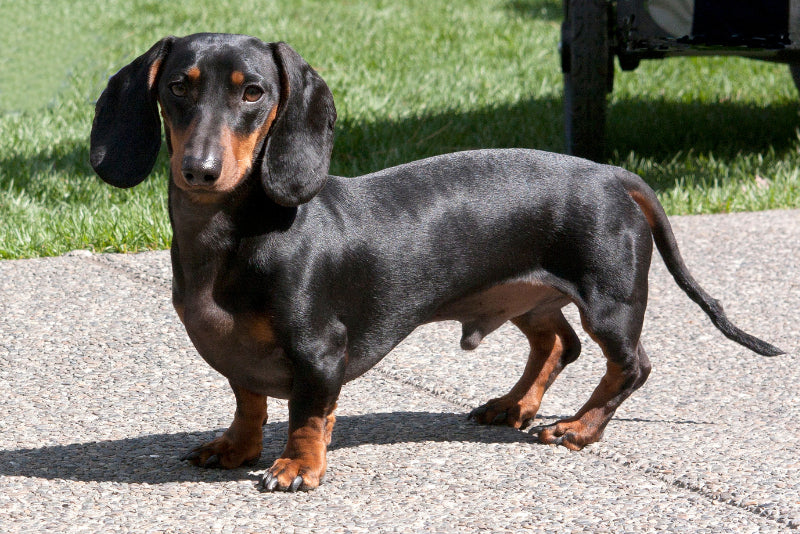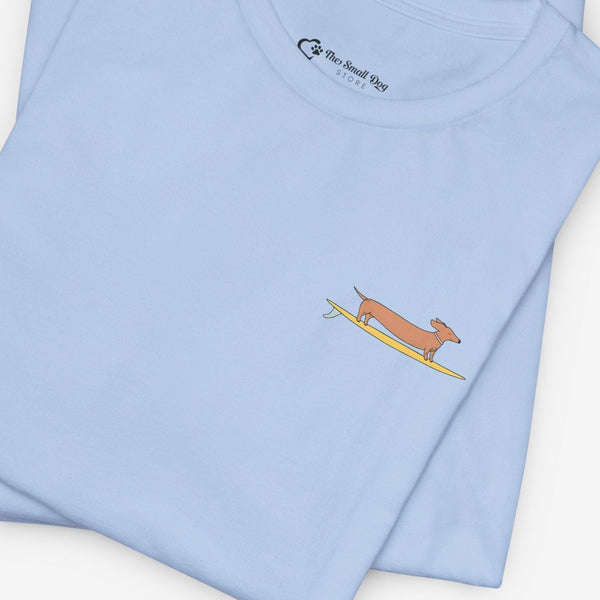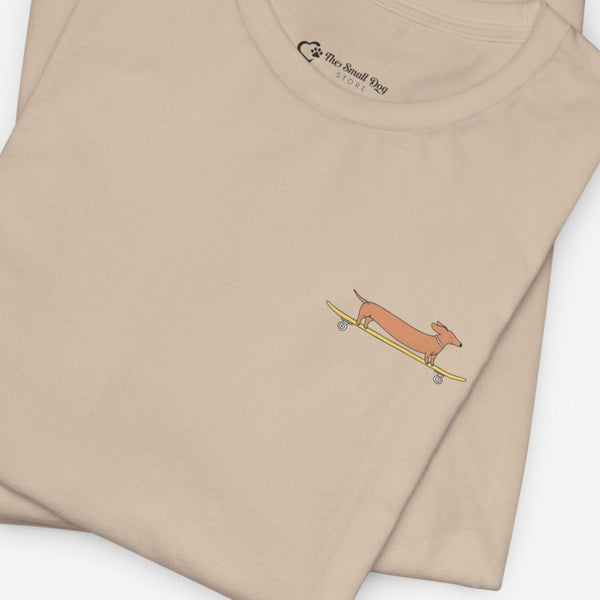The Origin and Evolution of the Dachshund Breed: From Badger Hunter to Beloved Companion
Posted by ROBERTO BURALLI

The Dachshund, with its distinctive elongated body and short legs, has become one of the world's most recognizable and beloved dog breeds.
This article explores the rich history, remarkable evolution, and cultural significance of the Dachshund, shedding light on how this unique breed developed from a specialized hunter to a cherished companion.
Early Origins
Ancestral Roots
The Dachshund's lineage can be traced back to a combination of hound and terrier breeds. This blend of ancestries contributed to the breed's exceptional scenting abilities, tracking instincts, and the tenacity required for their original purpose.
Early European manuscripts from the 15th century contain depictions of dogs resembling Dachshunds, suggesting that the breed's distinctive characteristics have been present for at least six centuries.
Geographic Origins
Germany is unequivocally recognized as the birthplace of the Dachshund. The breed's development was intimately tied to the country's diverse hunting traditions.
In the dense forests of Germany, larger Dachshunds were bred specifically for badger hunting, while in more rural areas, smaller varieties were developed for pursuing rabbits and foxes.
The name "Dachshund" itself is a testament to its primary hunting purpose, translating directly from German as "badger dog."

Development as a Hunting Dog
Role in Hunting
Dachshunds were meticulously bred for their hunting prowess, particularly in pursuing badgers. Their elongated bodies allowed them to navigate tight burrows, while their strong, large paws made them efficient diggers.
The loose skin of the Dachshund provided crucial protection against bites from their prey. Their loud, deep bark served as an essential tool for hunters, allowing them to locate their dogs when underground.
The breed's hunting abilities extended beyond badgers. They were also employed in hunting foxes and rabbits, and their keen sense of smell made them valuable in tracking wounded deer.
Early hunters employed rigorous training methods to enhance the Dachshund's natural hunting instincts and courage, creating a breed renowned for its determination and fearlessness in the face of formidable prey.
Evolution of the Breed's Purpose
As hunting practices evolved and urbanization increased throughout the 19th and early 20th centuries, the role of the Dachshund began to shift.
While they remained prized hunting companions in many rural areas, their intelligence, loyalty, and distinctive appearance made them increasingly popular as household pets.
This transition from working dog to companion animal highlighted the breed's adaptability and appealing temperament, setting the stage for their enduring popularity as family dogs.

Breeding and Standardization
Early Breeding Practices
Early breeders focused on enhancing traits that were beneficial for hunting. These included a keen sense of smell, physical endurance, and the intelligence necessary for problem-solving in burrows.
The Dachshund's courage and determination were also key traits that breeders sought to reinforce.
Regional variations in hunting needs and preferences led to the development of three distinct coat types. The smooth-haired variety, considered the original, was ideal for burrowing. The wire-haired Dachshund was developed for improved weather resistance, while the long-haired variety was created for enhanced aesthetics and better suitability for colder climates.
Establishment of Breed Standards
The standardization of the Dachshund breed began in earnest in the late 19th century. In 1879, the first breed standard was established in Germany, providing a blueprint for the ideal Dachshund.
The founding of the German Teckel Club in 1888 played a crucial role in refining and promoting these standards. As the breed gained popularity internationally, other countries established their own breed clubs and standards.
While these standards shared many similarities, subtle variations emerged in different countries, leading to slight differences in size and appearance.
Despite these variations, the fundamental characteristics that define the Dachshund remained consistent across international boundaries.

Dachshunds in Cultural Context
Dachshunds in Art and Literature
The Dachshund's distinctive appearance and charming personality have made it a favorite subject in various forms of artistic expression.
Renowned artists such as Pablo Picasso, David Hockney, and Andy Warhol have featured Dachshunds in their paintings, cementing the breed's place in high art.
In literature, Dachshunds have appeared in works by notable authors like E.B. White and John Steinbeck, often embodying qualities of loyalty, determination, and a touch of comical stubbornness.
In German culture, the Dachshund holds a special place, often symbolizing determination, courage, and a sense of humor.
This cultural significance has contributed to the breed's enduring popularity in its country of origin and beyond.
Influence of Famous Owners
Throughout history, Dachshunds have found favor with numerous high-profile individuals, significantly boosting the breed's popularity and social status.
Royal enthusiasts have included Queen Victoria and Kaiser Wilhelm II, while artists like Pablo Picasso and Andy Warhol were known Dachshund owners.
In the political sphere, U.S. Presidents such as John F. Kennedy and Grover Cleveland kept Dachshunds as pets.
More recently, celebrities like Adele, Jack Black, and Josh Duhamel have been spotted with their Dachshund companions, further enhancing the breed's appeal in popular culture.
SHARE:













